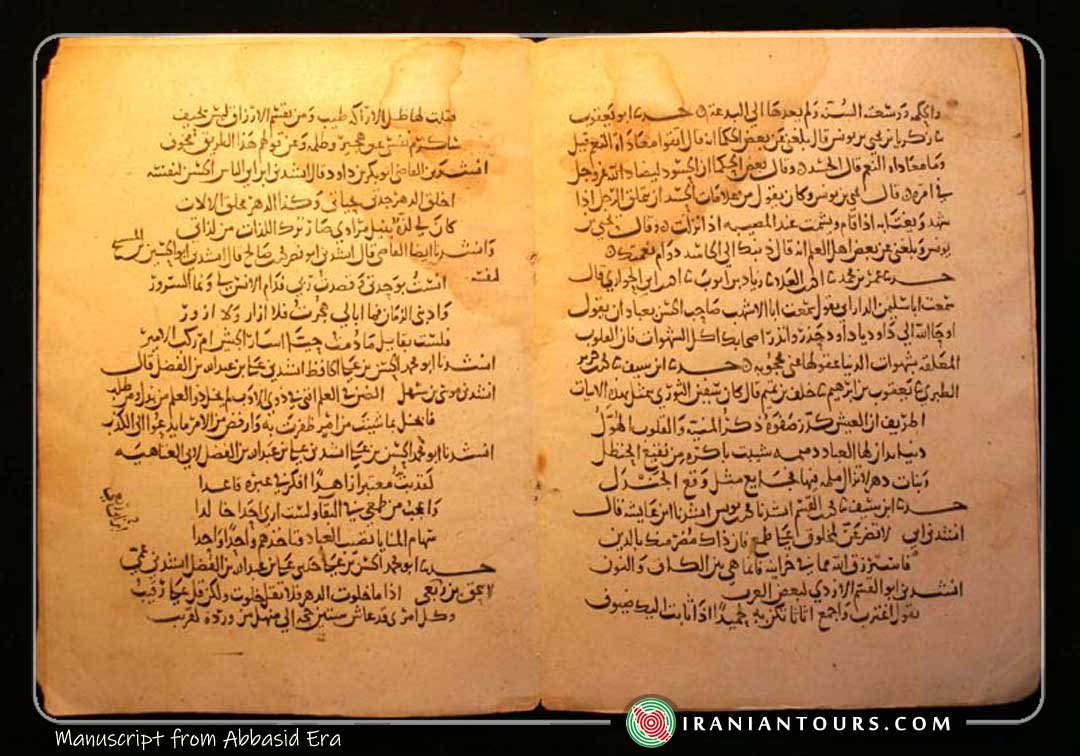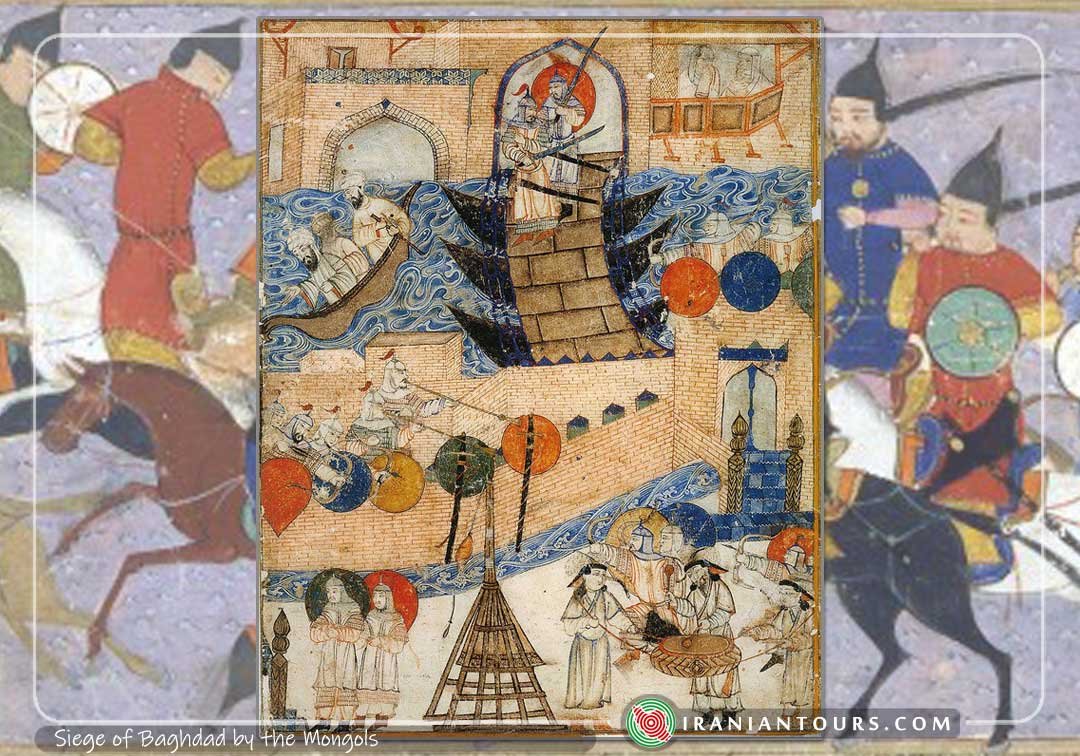



Timeline
The Abbasid Caliphate was the third caliphate to succeed the Islamic Prophet Muhammad. It was founded by a dynasty descended from Prophet Muhammad’s uncle, Abbas ibn Abdul-Muttalib (566–653 AD), from whom the dynasty takes its name. They ruled as caliphs for most of the caliphate from their capital in Baghdad in modern-day Iraq, after having overthrown the Umayyad Caliphate in the Abbasid Revolution of 750 AD (132 AH).
The Abbasid Caliphate first centred its government in Kufa, modern-day Iraq, but in 762 the caliph Al-Mansur founded the city of Baghdad, near the ancient Sasanian capital city of Ctesiphon. The Abbasid period was marked by reliance on Persian bureaucrats (notably the Barmakid family) for governing the territories as well as an increasing inclusion of non-Arab Muslims in the ummah (national community). Persianate customs were broadly adopted by the ruling elite, and they began patronage of artists and scholars. Baghdad became a centre of science, culture, philosophy and invention in what became known as the Golden Age of Islam.
Despite this initial cooperation, the Abbasids of the late 8th century had alienated both non-Arab mawali (clients) and Iranian bureaucrats. They were forced to cede authority over al-Andalus (Spain) to the Umayyads in 756, Morocco to the Idrisids in 788, Ifriqiya and Southern Italy to the Aghlabids in 800, Khorasan and Transoxiana to the Samanids and Persia to the Saffarids in the 870s, and Egypt to the Isma’ili-Shia caliphate of the Fatimids in 969.
The political power of the caliphs was limited with the rise of the Iranian Buyids and the Seljuq Turks, who captured Baghdad in 945 and 1055, respectively. Although Abbasid leadership over the vast Islamic empire was gradually reduced to a ceremonial religious function in much of the Caliphate, the dynasty retained control over its Mesopotamian domain. The Abbasids’ period of cultural fruition and its (reduced) territorial control ended in 1258 with the sack of Baghdad by the Mongols under Hulagu Khan and the execution of Al-Musta’sim. The Abbasid line of rulers, and Muslim culture in general, re-centred themselves in the Mamluk capital of Cairo in 1261. Though lacking in political power (with the brief exception of Caliph Al-Musta’in of Cairo), the dynasty continued to claim religious authority until after the Ottoman conquest of Egypt in 1517.
Brief History
List of Abbasid Caliphs
- as-Saffāḥ (750 – 10 June 754)
- al-Manṣūr (10 June 754 – 775)
- al-Mahdī bi-‘llāh (775 – 4 August 785)
- al-Hādī (August 785 – 14 September 786)
- Hārūn ar-Rashīd (14 September 786 – 24 March 809)
- al-Amīn (March 809 – 24/25 September 813)
- al-Maʾmūn (September 813 – 9 August 833)
- al-Muʿtaṣim bi-’llāh (9 August 833 – 5 January 842)
- al-Wāthiq bi-‘llāh (5 January 842 – 10 August 847)
- al-Mutawakkil ʿalā ‘llāh (10 August 847 – 11 December 861)
- al-Muntaṣir bi-‘llāh (861 – 7 or 8 June 862)
- al-Mustaʿīn bi-ʾllāh (862 – 866)
- al-Muʿtazz bi-ʾllāh (866 – 869)
- al-Muhtadī bi-‘llāh (869 – 21 June 870)
- al-Muʿtamid ʿalā ’llāh (21 June 870 – 15 October 892)
- al-Muʿtaḍid bi-‘llāh (October 892 – 5 April 902)
- al-Muktafī bi-‘llāh (5 April 902 – 13 August 908)
- al-Muqtadir bi-‘llāh (13 August 908 – 929)
- al-Qāhir bi-‘llāh (929)
- al-Muqtadir bi-‘llāh (929 – 31 October 932)
- al-Qāhir bi-‘llāh (31 October 932 – 934)
- ar-Rāḍī bi-‘llāh (934 – 23 December 940)
- al-Muttaqī li-‘llāh (940 – 944)
- al-Mustakfī bi-ʾllāh (September 944 – 29 January 946)
- al-Muṭīʿ li-ʾllāh (29 January 946 – 974)
- aṭ-Ṭāʾiʿ li-amri ʿllāh (974 – 991)
- al-Qādir bi-‘llāh (1 November 991 – 29 November 1031)
- al-Qāʾim bi-amri ‘llāh (29 November 1031 – 2 April 1075)
- al-Muqtadī bi-amri ’llāh (2 April 1075 – February 1094)
- al-Mustaẓhir bi-‘llāh (February 1094 – 6 August 1118)
- al-Mustarshid bi-‘llāh (6 August 1118 – 29 August 1135)
- ar-Rāshid bi-‘llāh (29 August 1135 – 1136)
- al-Muqtafī li-ʾamri ’llāh (1136 – 12 March 1160)
- al-Mustanjid bi-‘llāh (12 March 1160 – 20 December 1170)
- al-Mustaḍīʾ bi-amri ʾllāh (20 December 1170 – 30 March 1180)
- an-Nāṣir li-Dīni’llāh (2 March 1180 – 4 October 1225)
- aẓ-Ẓāhir bi-amri’llāh (5 October 1225 – 11 July 1226)
- al-Mustanṣir bi-‘llāh (11 July 1226 – 2 December 1242)
- al-Mustaʿṣim bi-‘llāh (2 December 1242 – 20 February 1258)
